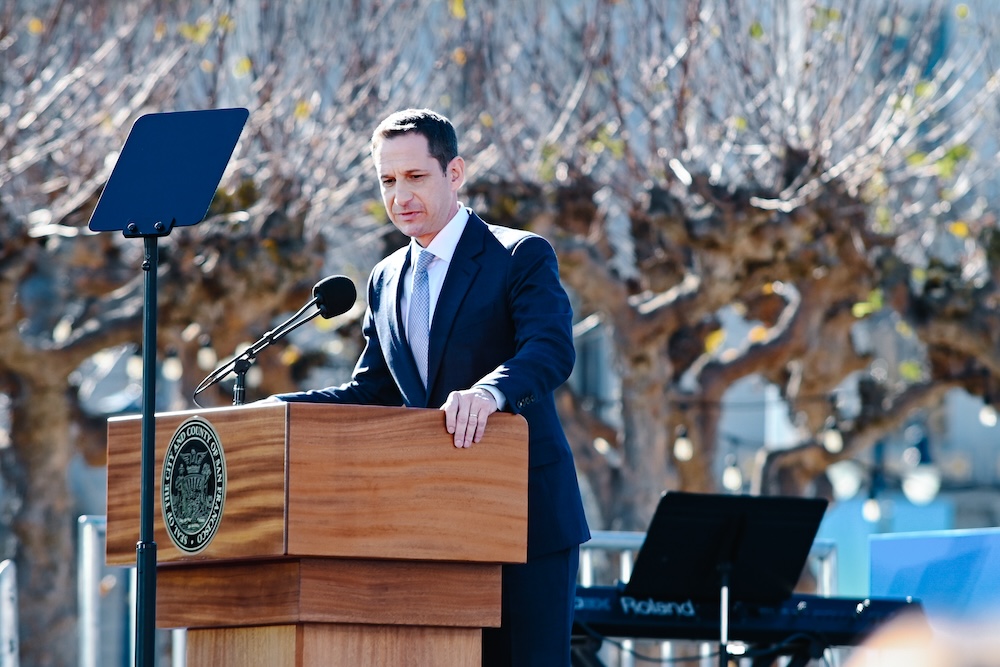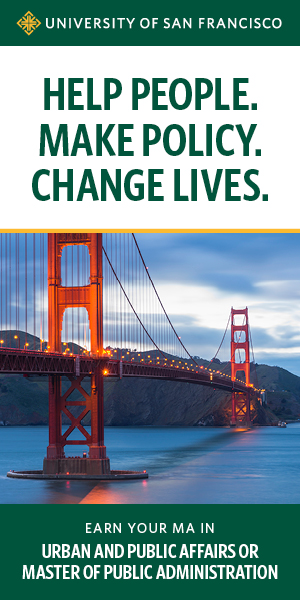The San Francisco Board of Supes is becoming a rubber stamp for most of Mayor Daniel Lurie’s agenda, with only two, and sometimes three, supes vote against the main elements.
That’s a huge change from the previous board, where a progressive majority often challenged Mayor London Breed and took initiatives to pass legislation that the mayor didn’t support.

Let’s take a look at just a few key recent votes:
On Lurie’s “emergency” fentanyl ordinance: 10-1, with only Sup. Shamann Walton in dissent.
On eliminating inclusionary housing for office conversions: 9-2, with Walton and Sup. Jackie Fielder opposed.
On suspending the empty-homes tax: 9-2, with Fielder and Walton voting No.
On Sup. Bilal Mahmood’s Drug Market Intervention plan: 9-2, with Walton and Fielder in dissent.
On firing Police Commissioner Max Carter Oberstone: 9-2, with Fielder and Sup. Myrna Melgar opposed.
On allowing the assessor-recorder to shake down big corporations for money: 10-1, with Sup. Connie Chan voting No.
On approving more SFPD overtime money: 9-2, with Walton and Fielder in dissent.
I realize that there’s a value to having the mayor and the supes work together; if Breed had been willing to do that, the city would have thousands more units of affordable housing in the works, but she prevented that from happening.
Still, the supes are supposed to be an independent voice, and I’m not seeing much in terms of dissent, even when the legislation (like police overtime and firing Carter Oberstone) is really bad.
Just for the record.
The Planning Commission is set to move forward Thursday/22 a plan that would allow Prologis, a big developer, to build more than 2 million square feet of what it describes as “Production, Distribution, and Repair” space on the edge of Bayview.
That all sounds good, but when you really dig into the documents, much of that space will be designated for “parcel delivery.“
As we reported when this first came up:
Well, you have to read more than 100 pages into the Environmental Impact Report to figure out what’s actually going on.
This “PDR” facility, it appears, is going to be primarily an Amazon distribution center, or something very similar.
The document shows that 759,000 square feet of the new space will be devoted to “parcel delivery.” Add in parking and “vehicle circulation space” and 73 percent of the new facility will be about parcel delivery.
That, of course, could be UPS or the United States Postal Service, except that both of those already have large facilities in the immediate area. Amazon already has a presence at the Toland St. site.
So while the developer is promoting “maker space,” that’s just a tiny fraction of the project.
The EIR says that it will generate about 5,000 “person vehicle trips” a day. Some of that will be people driving to work, since the area is badly served by transit.
A lot will be diesel trucks and gas-powered vans coming and going to bring in and bring out parcels.
This is in a neighborhood that the EIR freely admits has an alarmingly high incidence of asthma and other diseases that are linked to car and truck exhaust.
Prologis and Amazon have a long history; the developer has built many of the company’s facilities in Northern California.
Sup. Shamann Walton, who represents the district, has proposed a development agreement that would mandate 20,000 square feet of low-rent “maker space” and $750,000 for community benefits. It also calls for job training and union construction work.
But that deal, if approved, would be with Prologis, not Amazon. To be clear, Amazon has not made any public statements of interest in the space, but the company already operates out of the same address. And there is no other likely contender for that much “parcel delivery” space.
Amazon is fighting a local effort, as well as national efforts, to unionize its workplaces.
For the record, according to a new report from the Institute for Policy Studies:
Throughout Amazon’s history, corporate tax advantages have been essential to the company’s rapid growth and increasing market dominance, as well as the exploding wealth of the e-commerce giant’s top executives. In the early years, Amazon made a deliberate choice to avoid state sales taxes that fund our schools, health care, and other vital public services. For decades, that choice gave Amazon a crucial, unfair advantage against local bookstores, toy stores, and other smaller retailers.
The 2017 Tax Cuts and Jobs Act (TCJA), passed by congressional Republicans and signed by President Trump, only accelerated the concentration of economic and political power among the ultra-rich, while leaving ordinary working people far behind.
Among the report’s findings:
- Amazon has used credits and loopholes to avoid paying even the sharply reduced TCJA corporate tax rate of 21 percent. If they had paid the full statutory corporate rate of 21 percent between 2018 and 2021, their IRS bill would’ve been $12.5 billion higher.
- In 2018, Amazon actually recorded a negative federal tax rate, meaning the company pocketed more in credits and subsidies than it paid the IRS.
Meanwhile:
- In 2024, median pay at Amazon stood at just $37,181. At this low wage level, the typical Amazon worker is likely to be living paycheck to paycheck with little chance of benefiting from the discounted tax rates on capital gains.
- Between 2018 and 2024, the average Amazon worker’s income only increased by 3.3 percent, while rents increased by an average of 9.2 percent.
- Of the 1.2 million employees participating in Amazon’s 401(k) program in 2023, 72 percent had zero balances, meaning they could not afford to put any money aside in these tax-sheltered investment accounts.
None of that will be before the commission, of course. The panel gets to approve the land-use plan, and first has to certify the Environmental Impact Report. At the last hearing on the report, community leaders talked about the impact that all of the new trucks, mostly (for new) spewing diesel fumes, would have on a neighborhood already devastated by air pollution.
As Commissioner Kathrin Moore noted: “This is already an air pollution exposure zone. How can we mitigate what is already an unacceptable circumstance?”
That meeting starts at noon.
Sunday’s Bay to Breakers was as fun and festive as I’ve seen in years—except for the city’s public transportation system, which was an epic fail.
I’ve been running B2B for about 20 years now, and it’s always the same drill: Take Muni to BART, BART to either Montgomery or Embarcadero, and you’re five minutes from the starting line. The trains and the stations are packed with people in costume, celebrating and dancing and high-fiving each other.
Not this year.
The BART stations were closed in the Mission and on Market, and no special trains were running. The Mission R stopped at 11th Street and turned around. The Muni Metro stations were closed. There were no buses or trains on Market at all.
In other words: No way to get there but walk half an hour—or, as many people did, pay Lyft to rent a bike or Lime to rent a scooter. Soon, the option will be Waymo.
This tech takeover of public transit has been in the works for years. Uber has been talking about replacing transit with rideshares since its IPO; now the company is creating its own private bus service.
On Sunday, with at least 20,000 people trying to get to Bay to Breakers, Muni and BART didn’t even try.



